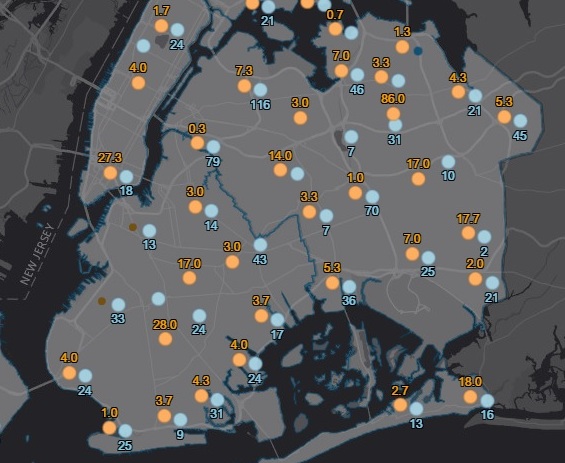Aug. 24, 2016 By Hannah Wulkan
The city has released an interactive map that shows where the most mosquitoes are in New York City, and what work it is doing to prevent the spread of Zika Virus.
According to the map, the highest population of adult mosquitoes is in Queens, with the highest weekly averages recorded in Jackson Heights.
The map illustrates all of the locations where the Health Department traps and tests mosquitoes each week, and the average number of mosquitoes caught in each district throughout the week.
The map also shows the different kinds of mosquitoes caught in each area. The native varieties to New York are Culex pipiens and Culexrestuans, known for carrying West Nile Virus, and Aedes albopictus, which can transmit Zika.
The city has worked to combat mosquitoes and West Nile Virus through trapping and testing since 2000, but this year has doubled its efforts in response to the Zika outbreak in Latin America and the Caribbean. However, these efforts are merely preventative at this point, as no instances of Zika have been found in any of the mosquitoes tested in the city.
The map was launched as part of the health department’s three-year, $21 million initiative to keep the Zika virus from spreading, though as of August 18, not a single mosquito caught in the traps has tested positive for Zika. The Health Department did find instances of West Nile Virus in 187 mosquito traps throughout the five boroughs, which is 28 percent lower than the last three-year average.
In addition to trapping and testing mosquitoes in 120 traps throughout the city, the Health Department is also taking other steps to control their growth. It treats catch basins, or places where there is stagnant water that does not drain, with larvicides that kill young mosquitoes, as those areas tend to be where mosquitoes lay their eggs. The map also shows which areas were most recently treated, and which areas have been treated in the past.
The Health Department also sprays larvicides and pesticides around the city in several ways, such as by foot, helicopter, and truck.
The last spraying in Astoria, Jackson Heights, and parts of Woodside took place on August 9. The Health Department has not yet announced when the next spraying in Western Queens will take place.







